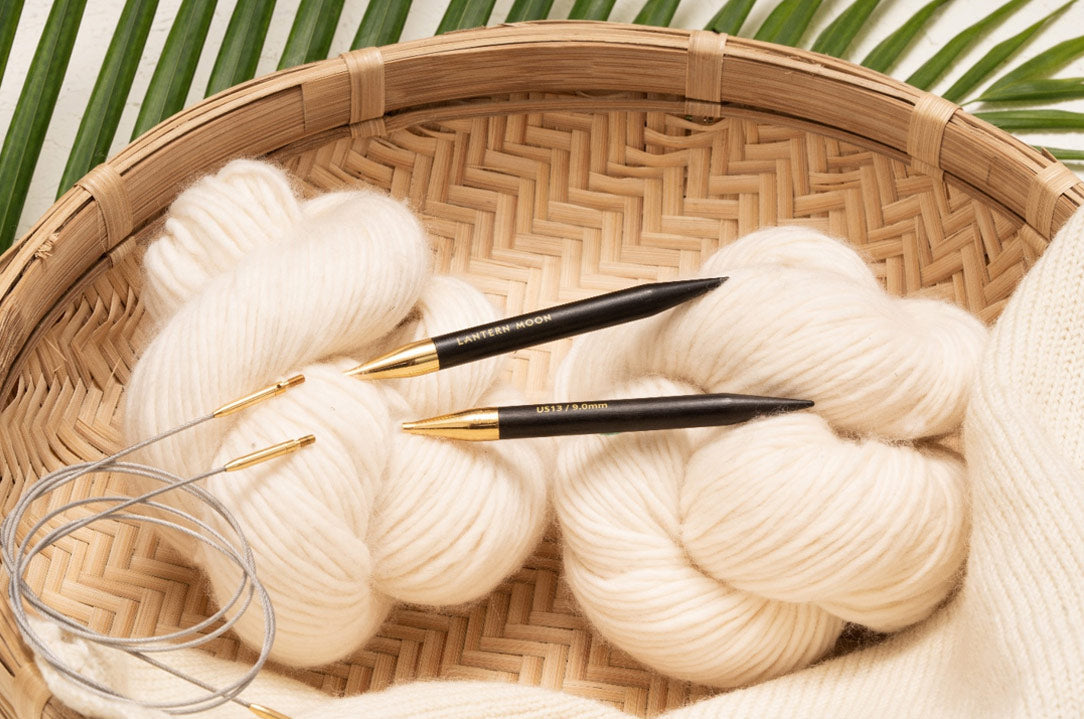
Let's make your finished piece a masterpiece! Yes, it's time to give a clean and professional look to your creation, which can be done using the blocking technique that many knitters overlook. Block knitting is a kind of secret sauce that transforms the freshly knitted item into a polished, smooth, and professionally looking piece. Whether you are an expert or a beginner, you might be frustrated that your stitches look uneven and didn't get a perfect drape. Let's walk you through in detail with our blog.
What Exactly is Blocking in Knitting?
The simple process of wetting or steaming your finished knitting project and shaping it while it dries. It makes the stitches even, opens up lacework, straightens edges, and helps your fabric drape nicely. It is kind of ironing your knitted fabric gently, and using the magical techniques. Refer to our quick guide on how to knit neat edges that do not curl.
Does it Matter in Knitting?
Blocking will make your fabric a beautiful masterpiece and handcrafted. Here are some reasons:
- When it is used in your knitted fabric, it smooths out irregular stitches.
- It opens up lace and textured patterns.
- You get a beautiful drape that fits perfectly. Read our blog for 5 tips to find a drape in crocheted fabric.
- After blocking, it gives the final shape and size to your project.
What are the Types of Blocking in Knitting?
It is required in almost all types of patterns. Mainly, there are three types:
1. Wet
This is the easiest method, wherein you will soak the fabric for some time, gently squeeze the excess water, and lay it flat to dry.
Best for: Wool, alpaca, and cotton.
How to do it:
- Add lukewarm or room temperature water into the basin.
- Soak your finished piece in the water for 15-20 minutes.
- Gently remove any excess water from it.
- Then, on the lace blocking mat, or lay your item flat and stretch it to the correct size.
- With the knitting tool, like T-pins, to pin down edges and curves.
- Lastly, dry it flat for a day or more. Depending on the yarn requirement.
2. Steam
It is one of the quickest methods using a steam iron or steamer. You just need to hover the steam above the fabric and then pin it into the shape.
Best for: Sturdy fabric and projects that need reshaping.
How to do it:
- Simply, place your fabric on the mat or towel.
- With your hands, shape the piece before applying steam.
- Now, hold the steamer 1-2 inches above the fabric without touching it directly.
- Allow it to cool and dry completely before moving.
3. Spitz or Mist
This method involves laying down the project and spraying it lightly with water before shaping it.
Best for: Delicate lace or cotton projects.
How to do it:
- Lay your fabric flat, pin it with lace blocking accessories with the desired shape on your blocking surface.
- Lightly mist it with water using a spray bottle until it is damp but not soaked.
- Leave the fabric pinned until it dries completely.
Explore Blocking Knitting Tips

- Make a sample gauge swatch, try this technique on it, and see how your yarn will behave.
- Don't dry in the sunlight, as it can fade colors or dry fabric unevenly.
- While pinning the fabric, use a ruler or tape to keep things balanced.
- Don't overstretch, especially the delicate yarns.
How to Block Knitting in Circular Projects with the Tool?
The basic method, which we described above, worked with every knitted project. Fabrics that are designed with circular knitting needles, which have no edges, generally end up with fold lines.
To avoid this situation, you must follow:
- For circular projects such as socks, you need a special sock blocking board. Learn how to knit socks on DPNs.
- Instead of pinning it, simply slip the socks after washing and let them dry.
- For hats or caps knitted with double-pointed needles, use a balloon to block knitting. Explore easy knitting project ideas with our blog.
Blocking is the finishing touch that enhances your knitting projects from good to gorgeous. It’s not just for lace or fancy projects, but for a basic scarf or dishcloths that look better after blocking. Whether you go for a full soak or a light steam, the result is worth the effort. So next time you want to use blocking in your fabric, don’t stop there and grab those pins, stretch out your stitches, and give a fantastic touch to your creation.
